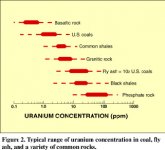Sorry, I don't get back to the site as quickly as I want sometimes.
Half truths or incorrect statements,
1.) Hydraulic fracturing is not a drilling process. It is a completion process performed after the drilling of the well is finished.
2.) "Shale rocks"(?) or shale, as it is commonly known, is already fractured naturally, hydraulic fracturing opens or spreads the fractures microscopically to allow more gas to flow into the well bore.
Not sure of the numbers but 400 trucks could be correct, but diesel fuel is used on a lot of different types of sites. why demonize this industry?
1-8 million gallons of water per well, 1 time. Not every fracture.
3.) 40,000 gallons chemicals(?) in 4 million gallons of water! That means that the frac fluid is 99.99% water!
4.)There are probably 6 or 7 chemicals used in fracing most of the time, all reported to the state, and all found in common household items. Carcinogenic or toxic? Maybe, but it is not getting into your water supply so you are not drinking it!
5.) The math is wrong, wells are not fraced 18 times, only once.
6.)Contamination; During this process, methane gas and toxic chemicals leach out from the system and contaminate nearby groundwater. Methane concentrations are 17x higher in drinking-water wells near fracturing sites than in normal wells.
I copied and pasted this! Lies and bad science. No fracing procedure has leached out and contaminated groundwater!
7.)Contaminated well water is used for drinking water for nearby cities and towns. There have been over 1,000 documented cases of water contamination next to areas of gas drilling as well as cases of sensory, respiratory, and neurological damage due to ingested contaminated water.
Never has this ever been proven. Here say and out right lies. There are no health effects tied to drinking water near drilling activity.
8.) Only 30-50% of the fracturing fluid is recovered, the rest of the toxic fluid is left in the ground and is not biodegradable.
This not true, the water is held tightly in place and returns over time during production of gas.
9.) The waste fluid is left in open air pits to evaporate, releasing harmful VOC’s (volatile organic compounds) into the atmosphere, creating contaminated air, acid rain, and ground level ozone.
Wrong again, the water is diluted with fresh water and held in impoundments to be recycled. This area is to humid to wait for evaporation to occur.
10.) Drilling and producing natural gas is a safe operation, we have been drilling for oil and gas in PA for over 150 years.
Gotta run but will be back later.
Maurice wrote:
Gudgeonville wrote:
Creative and imaginative website that can be used to scare children and folks that are ignorant of the facts. Simplistic use of certain facts interspersed with overused half truths. I would expect nothing less from a disciple of Josh Fox.
Share with us the half truths...and why they are half truths. Just seemed to be a reporting of statistics. (except for the radium/uranium "use") but never the less is a by product that needs to be dealt with.
I found the evaporation pits nugget to be interesting. Evaporation of concentrated VOC's into the atmosphere. Is this one of the half truths?




